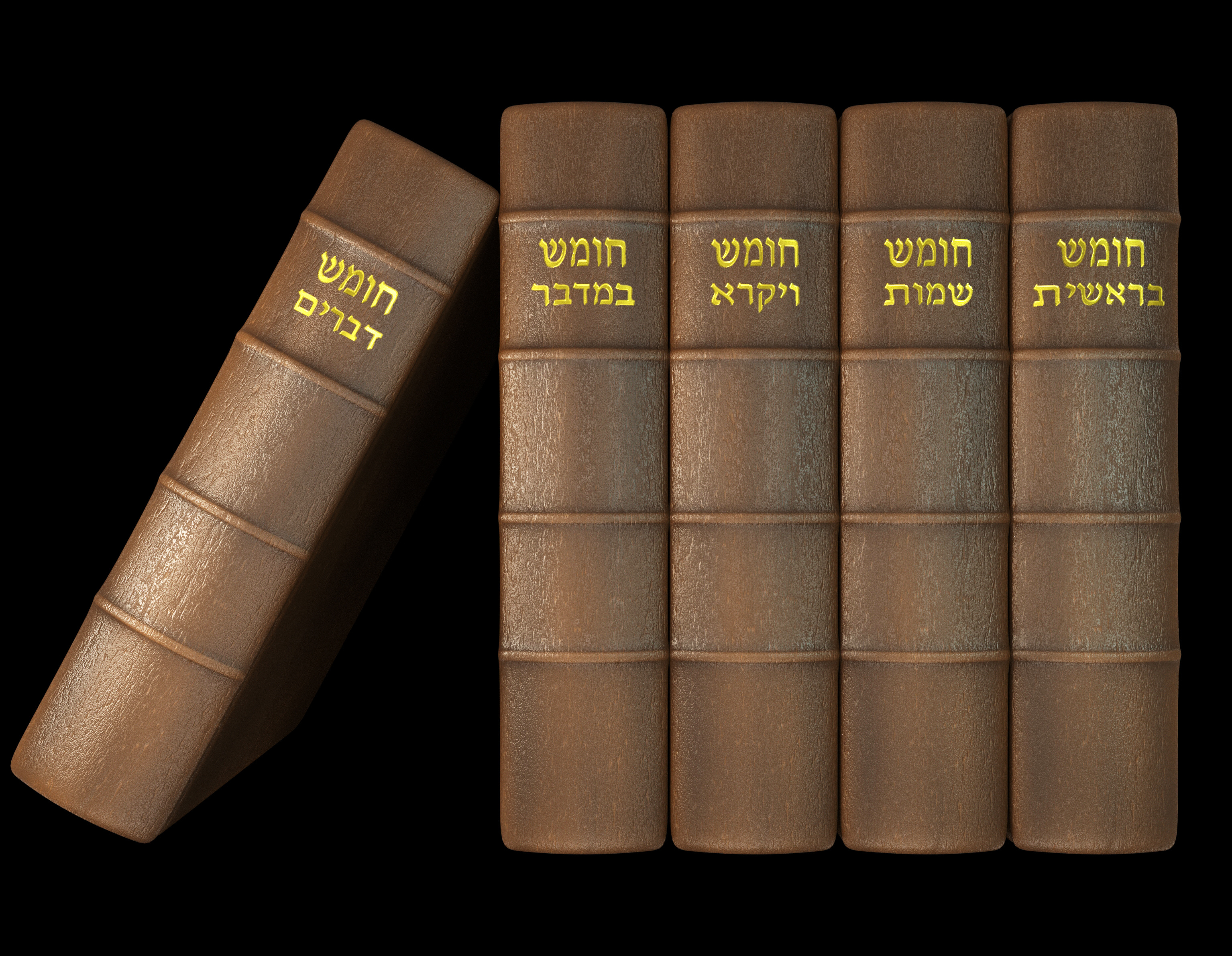Your Tikun and Chumash
Books to help you prepare for your reading from the Torah Scroll
ְּבְּרֵאשִׁית, שְׁמוֹת, וַיִּקְרָא, בְּמִדְבַּר, דְּבָרִים
Your Tikkun and Chumash are tools to help you prepare for reading from the Torah Scroll, after you have mastered reading basic Biblical Hebrew. The Torah Scroll contains the 5 Books of Moses (Genesis, Exodus, Leviticus, Numbers and Deuteronomy). Written by a Scribe in Hebrew, with no vowels or chanting cantillation marks nor page numbers nor any references to Book / Parsha / Aliyah / Chapter or Verse.
To prepare, first identify your reading. Your reading will be from a specific Book, for one of 54 Parshas (sections) and for one or more Aliyahs (being called up to the Torah to read; there are 8 Aliyahs per Parsha). If your reading is for your Bar/Bat Mitzvah, your birth date will determine your portion. Next, find and read the English translation for your Aliyah(s) in the Chumash. Then, using either your Chumash or your Tikkun, read the Hebrew using the vowels and cantillation marks. Finally, use your Tikkun to practice reading the Hebrew as it appears in the Torah Scroll. Most importantly, continually ask for and seek out assistance.
- Chumash - This book contains the first 5 Books of Moses in both English and in Hebrew (with vowels and cantillation), along with commentary notes and references. It is very easy to find a specific reading in the Chumash because it is indexed by both Book/Chapter/Verse and by Parsha/Aliyah. Haftarah portions, reading from the Prophets after the Torah Reading, are also included.
- Tikkun Korim - Tikkun for Torah Reading. This Tikkun follows the formatting of the Torah Scroll. For the illustrations in this Website, the Torah Scroll and Tikkun are using the format of 245 Columns with 42 Lines per Column. Check and validate the formatting of the Torah Scroll that you will be reading from and the formatting of the Tikkun Korim you are using. The Tikkun Korim contains two pages for each Column in the Torah Scroll. One page contains the text only the same way that it appears in the actual Torah Scroll, and the facing page contains the Hebrew text with vowels and cantillation marks. The top of each page will contain the number of the Column, along with the Book (Sefer) and Parsha.

Strive to master and maintain the following skills:
- Big Picture – Think of the Chumash as a whole, and then become familiar, at a high level, with each Parsha within each Book. Create a worksheet for yourself, list the name of the Parsha in Hebrew, find the appropriate English translation, and then write a 2-3 sentence summarizing the highlights of each Parsha. Ask for help!
- My Part(s) - Think of your Torah Readings as your “special places” within the whole of the Torah Scroll / Chumash. Memorize where those readings begin (including page number) and be able to find them quickly. Know where each of your readings ends.

Strive to master and maintain the following skills:
- Big Picture - Think of the Torah Scroll/Tikkun as an integrated whole and become familiar with it as such – start with Column 1 and go page by page until you reach Column 245 – read the headings on each page that describe the Sefer(s) and Parsha(s) contained within each Column.
- My Part(s) - Think of your Torah Readings as your “special places” within the whole of the Torah Scroll / Tikkun. Memorize where those readings begin (including Column Number) and be able to find them quickly. Know where each of your readings begin and end.
For the upcoming Shabbat – What is the Torah Reading? Which Parsha? Are there any special readings for Rosh Chodesh/New Month or for Holidays?
Share your current skills and knowledge with someone
Investigate – Find the Torah Reading in your Chumash. Read it in English; read it in Hebrew. Be able to give a summary of the reading, and find what specifically resonates with you.
Investigate – Find the Torah Reading in your Tikun. Find the beginning of the reading and the end. Become familiar with the formatting of the Column where the reading begins. Be able to point to the beginning text for each Aliyah.
245 244 243 242 241 240 239 238 237 236 235 234 233 232 231 230 229 228 227 226 225 224 223 222 221 220 219 218 217 216 215 214 213 212 211 210 209 208 207 206 205 204 203 202 201 200 199 198 197 196 195 194 193 192 191 190 189 188 187 186 185 184 183 182 181 180 179 178 177 176 175 174 173 172 171 170 169 168 167 166 165 164 163 162 161 160 159 158 157 156 155 154 153 152 151 150 149 148 147 146 145 144 143 142 141 140 139 138 137 136 135 134 133 132 131 130 129 128 127 126 125 124 123 122 121 120 119 118 117 116 115 114 113 112 111 110 109 108 107 106 105 104 103 102 101 100 99 98 97 96 95 94 93 92 91 90 89 88 87 86 85 84 83 82 81 80 79 78 77 76 75 74 73 72 71 70 69 68 67 66 65 64 63 62 61 60 59 58 57 56 55 54 53 52 51 50 49 48 47 46 45 44 43 42 41 40 39 38 37 36 35 34 33 32 31 30 29 28 27 26 25 24 23 22 21 20 19 18 17 16 15 14 13 12 11 10 9 8 7 6 5 4 3 2 1
אהבת עברית
Copyright © 2017 · All Rights Reserved - Ahavat Ivrit LLC · AhavatIvrit